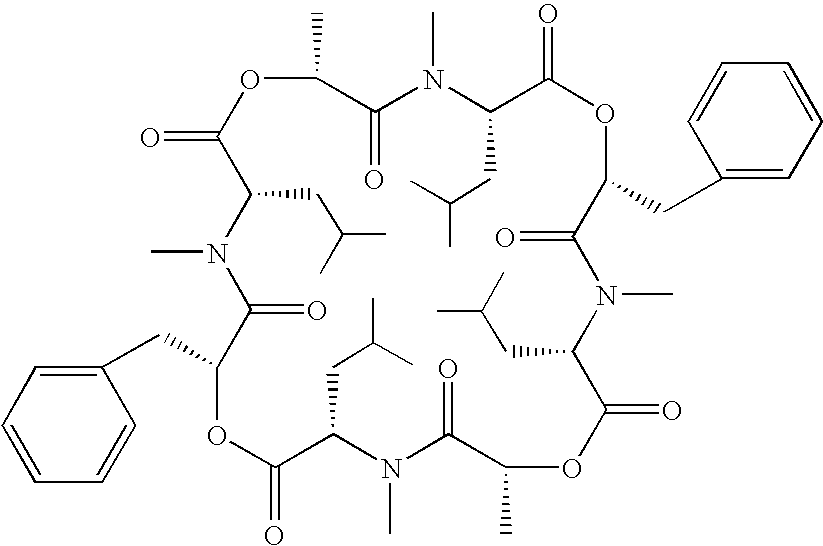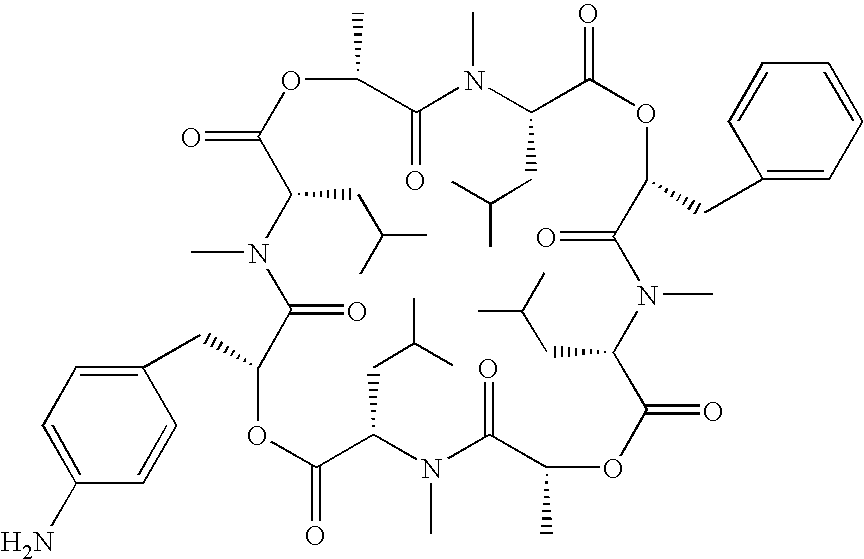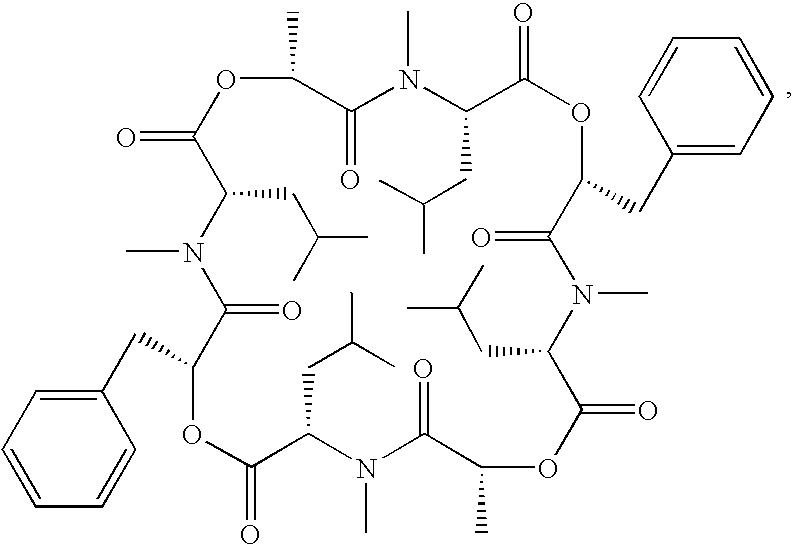Transformant producing secondary metabolite modified with functional group and novel biosynthesis genes
a technology of functional groups and transformants, applied in the field of transformants producing secondary metabolites modified by functional groups, can solve the problems of difficult introduction of nitro groups into benzene ring specific at the paraposition using chemical methods, low yield, and rare practical use of secondary metabolites of organisms. achieve the effect of low cost and easy production of modified secondary metabolites
- Summary
- Abstract
- Description
- Claims
- Application Information
AI Technical Summary
Benefits of technology
Problems solved by technology
Method used
Image
Examples
example 1
Isolation of a Gene Encoding 4-amino-4-deoxychorismic Acid Synthase, a Gene Encoding 4-amino-4-deoxychorismic Acid Mutase, and a Gene Encoding 4-amino-4-deoxyprephenic Acid Dehydrogenase from Streptomyces venezuelae
(1) Preparation of Probe DNA Fragment
[0088]A 50 ml portion of a liquid medium (2% soluble starch, 1% polypeptone, 0.3% meat extract, 0.05% potassium dihydrogenphosphate, pH 7.0) was prepared in a 250-ml Erlenmeyer flask. The ISP5230 strain and 140-5 strain of Streptomyces venezuelae were each inoculated into this medium and cultured at 28° C. for 24 hours. After culturing, the cells were harvested from the culture by centrifugation, and the chromosome DNA was prepared from these cells by the method described in Genetic Manipulation of Streptomyces, A Laboratory Manual (D. A. Hopwood et al., The John Innes Foundation, 1985).
[0089]Next, PCR was carried out using the above-mentioned chromosomal DNA of the Streptmyces venezuelae strain ISP5230 as a template and oligonucleoti...
example 2
Expression of papA Gene in Escherichia coli
[0096]In order to obtain the translation region of the papA gene, PCR was carried out with the phage DNA derived from the positive clone shown in Example 1 as a template and oligonucleotides of SEQ ID NO: 9 and SEQ ID NO: 10 as primers. The PCR was carried out with KOD Dash (Toyobo Co., Ltd.) as DNA polymerase using the Gene Amp PCR System 9700 (Perkin-Elmer). A reaction solution containing 1 μl of phage DNA (equivalent to 1 μg), 5 μl of 10-fold concentrated reaction buffer attached to the enzyme, 5 μl of a 2 mM dNTP solution, 1 μl each of the above-mentioned primers prepared at a concentration of 100 pmol / μl, 5 μl of dimethyl sulfoxide (Wako Pure Chemical Industries, Ltd.), 1 μl of KOD Dash, and 31 μl of sterile water was made up into a total volume of 50 μl. The reaction was carried out by repeating incubation of 15 cycles of 30 seconds at 94° C., 2 seconds at 50° C. and 30 seconds at 72° C., after pretreatment at 94° C. for 5 minutes. T...
example 3
Expression of papB Gene in Escherichia coli
[0104]In order to obtain the translation region of the papA gene, PCR was carried out with the phage DNA derived from the positive clone shown in Example 1 as a template and oligonucleotides of SEQ ID NO: 11 and SEQ ID NO: 12 as primers. The PCR was carried out with KOD Dash (Toyobo Co., Ltd.) as DNA polymerase using Gene Amp PCR System 9700 (Perkin-Elmer). A reaction solution containing 1 μl of phage DNA (equivalent to 1 μg), 5 μl of 10-fold concentrated reaction buffer attached to the enzyme, 5 μl of a 2 mM dNTP solution, 1 μl each of the above-mentioned primers prepared at a concentration of 100 pmol / l, 5 μl of dimethyl sulfoxide (Wako Pure Chemical Industries, Ltd.), 1 μl of KOD Dash and 31 μl of sterile water was made up into a total volume of 50 μl. The reaction was carried out by repeating incubation of 15 cycles of 30 seconds at 94° C., 2 seconds at 50° C. and 30 seconds at 72° C., after pretreatment at 94° C. for 5 minutes. The re...
PUM
| Property | Measurement | Unit |
|---|---|---|
| volume | aaaaa | aaaaa |
| volume | aaaaa | aaaaa |
| volume | aaaaa | aaaaa |
Abstract
Description
Claims
Application Information
 Login to View More
Login to View More - R&D
- Intellectual Property
- Life Sciences
- Materials
- Tech Scout
- Unparalleled Data Quality
- Higher Quality Content
- 60% Fewer Hallucinations
Browse by: Latest US Patents, China's latest patents, Technical Efficacy Thesaurus, Application Domain, Technology Topic, Popular Technical Reports.
© 2025 PatSnap. All rights reserved.Legal|Privacy policy|Modern Slavery Act Transparency Statement|Sitemap|About US| Contact US: help@patsnap.com



